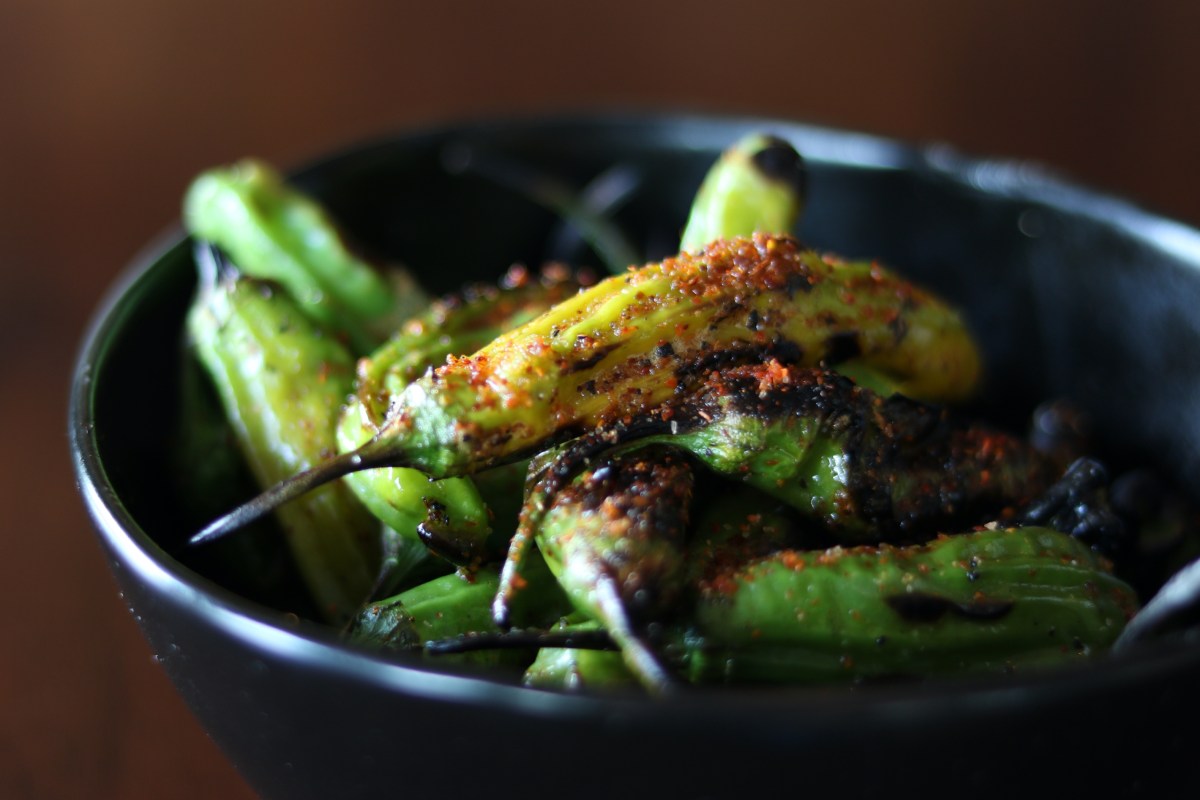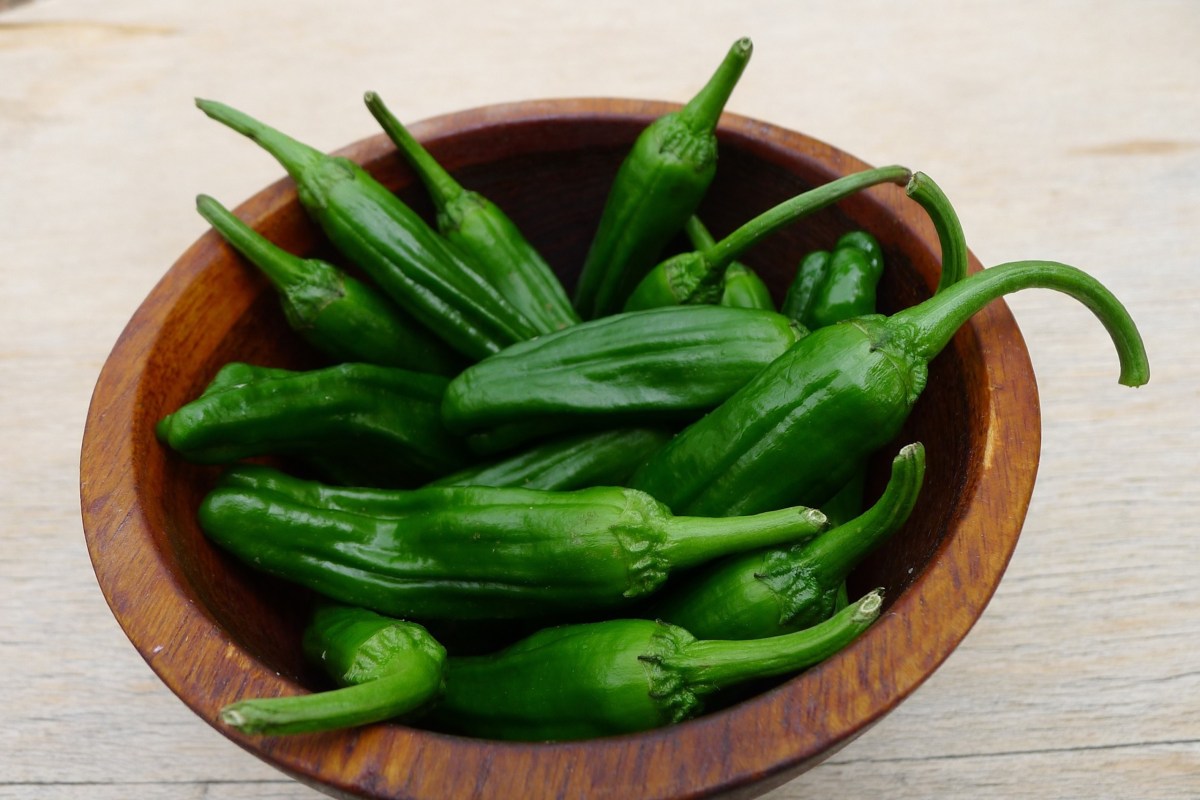They’re subtle, they’re spicy, and they’re gaining traction in Pinterest recipes: they’re shishito peppers! With a unique flavor and crunchy texture, these veggies add a touch of heat to a wide variety of dishes, but a simple roast, salt, and serve is also a great, simple preparation method.
If you’re a culinary newbie and don’t know one type of pepper from the next, no worries! In this article, we’ll break down everything you need to know about shishito peppers, including how to identify one, what spice level is right for you, and the best tips for including them in your diet. We’ll also go over the health benefits of shishito peppers and what makes them so coveted.
What are shishito peppers?
Shishito peppers are small green peppers with a slim cylinder shape and a slight curve. These textured vegetables have extremely thin skin and a large cavity in the center, averaging 3-5 centimeters long.
Shishito peppers originated in Japan and are close cousins to the Spanish padrón pepper. In fact, the two are so similar that they’re often confused for one another. Even though they’re both from the same pepper family (capsicum annum) their differences are significant. Padrón peppers have a much smoother texture and thinner skin than the wrinkled shishito. Further, shishitos have a sweeter, milder flavor profile, so they accommodate a wider variety of palates.

Are shishito peppers spicy?
While most shishito peppers have only a mild heat that’s only a bit spicier than your average bell pepper, about one in every 10 packs a punch. Still, even the spicier shishitos may not phase you. At their hottest, these peppers are still milder than your average jalapeño. Shishito peppers clock in at between 100 and 1,000 on the Scoville Heat Scale, depending on their capsaicin concentration, but that looks measly compared to the jalapeño’s 2,500 to 8,000. Even the closely related padrón pepper has a stronger kick at 500 to 2,000 on average.
The game of chance that comes with snacking on shishito peppers is a lot of the appeal, for some. Many like experiencing a bit of spice that isn’t overwhelming, which makes them popular finger foods.
Are shishito peppers healthy?
Whether you want to classify peppers as fruits or vegetables (yup, they’re both) there’s plenty of benefits to adding shishito peppers to your diet. Like many vegetables, these morsels are chock full of fiber, which promotes gut health, lowers cholesterol levels, and keeps you feeling fuller longer.
Shishito peppers are also high in both antioxidants and vitamin C, both of which are key to promoting immune health. Antioxidants rid the body of toxins while Vitamin C promotes the production of even more antioxidants.
For seven Trader Joe’s brand raw shishito peppers, you’ll consume 15 calories, 4 grams of carbohydrates, 1 gram of protein, 2 grams of sugar, and no fat! As an added bonus, capsaicin boosts metabolism so, while you’re consuming scant calories you’re burning more.
e
Healthy shishito pepper recipe
Blistered shishito peppers are by far the most common (and simple!) way to prepare these spicy veggies. The recipe is so loved, even healthcare superstar Kaiser Permanente made their own version. Simply cook the peppers in olive oil on the stovetop until blistered, then sprinkle with salt and lemon juice. Voila!
Now that you’re in the know about the shishito pepper, get ready to add it to your next meal or charcuterie board. You’ll have better luck finding them during summer when they’re in season, but most large grocery stores will import them year-round. Since you don’t need much to prepare a healthy snack with these peppers, there’s plenty of room for you to get creative, too! From citrus to salt and even smoke, there’s plenty of flavors that will complement and enhance the subtle heat of the tiny green shishito pepper. Happy cooking!
BlissMark provides information regarding health, wellness, and beauty. The information within this article is not intended to be medical advice. Before starting any diet or exercise routine, consult your physician. If you don’t have a primary care physician, the United States Health & Human Services department has a free online tool that can help you locate a clinic in your area. We are not medical professionals, have not verified or vetted any programs, and in no way intend our content to be anything more than informative and inspiring.




